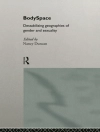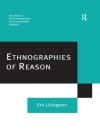What matters in people’s social lives? What motivates and inspires our society? How do we enact what we know?
Since the first edition published in 1980, Content Analysis has helped shape and define the field. In the highly anticipated Fourth Edition, award-winning scholar and author Klaus Krippendorff introduces readers to the most current method of analyzing the textual fabric of contemporary society. Students and scholars will learn to treat data not as physical events but as communications that are created and disseminated to be seen, read, interpreted, enacted, and reflected upon according to the meanings they have for their recipients. Interpreting communications as texts in the contexts of their social uses distinguishes content analysis from other empirical methods of inquiry.
Organized into three parts, Content Analysis first examines the conceptual aspects of content analysis, then discusses components such as unitizing and sampling, and concludes by showing readers how to trace the analytical paths and apply evaluative techniques. The Fourth Edition has been completely revised to offer readers the most current techniques and research on content analysis, including new information on reliability and social media. Readers will also gain practical advice and experience for teaching academic and commercial researchers how to conduct content analysis.
Spis treści
Preface to the Fourth Edition
Introduction
PART I. CONCEPTUALIZING CONTENT ANALYSIS
Chapter 1. History
1.1 Some Precursors
1.2 Quantitative Newspaper Analysis
1.3 Early Content Analysis
1.4 Propaganda Analysis
1.5 Content Analysis Generalized
1.6 Computer Text Analysis
1.7 Qualitative Approaches
Chapter 2. Conceptual Foundation
2.1 Definition
2.2 Epistemological Elaborations
2.3 Examples
2.4 Framework
2.5 Contrasts and Comparisons
Chapter 3. Uses and Inferences
3.1 Traditional Overviews
3.2 Extrapolations
3.3 Standards
3.4 Indices and Symptoms
3.5 Linguistic Re-Presentations
3.6 Conversations
3.7 Institutional Processes
3.8 Areas of Likely Success
PART II. COMPONENTS OF CONTENT ANALYSIS
Chapter 4. The Logic of Content Analysis Designs
4.1 Content Analysis Designs
4.2 Designs Preparatory to Content Analysis
4.3 Designs Going Beyond Content Analysis
Chapter 5. Unitizing
5.1 Units
5.2 Types of Units
5.3 Ways of Defining Units
5.4 Productivity, Efficiency, and Reliability
Chapter 6. Sampling
6.1 Sampling in Theory
6.2 Sampling Techniques Applicable to Texts
6.3 Sample Size
Chapter 7. Recording/Coding
7.1 The Function of Coding and Recording
7.2 Coder Qualifications
7.3 Coder Training
7.4 Crowdcoding
7.5 Approaches to Defining the Semantics of Data
7.6 Records
Chapter 8. Data Languages
8.1 The Place of Data Languages in Analytical Efforts
8.2 Definitions
8.3 Variables
8.4 Nominal Variables
8.5 Ordered Variable
8.6 Metrics
8.7 Mathematical Operations
Chapter 9. Analytical Constructs
9.1 The Role of Analytical Constructs
9.2 Sources of Certainty
9.3 Types of Constructs
9.4 Sources of Uncertainty
PART III. ANALYTICAL PATHS AND EVALUATIVE TECHNIQUES
Chapter 10. Analytical/Representational Techniques
10.1 Counts
10.2 Cross-Tabulations, Associations, and Correlations
10.3 Multivariate Techniques
10.4 Factor Analysis and Multidimensional Scaling
10.5 Images, Portrayals, Semantic Nodes, and Profiles
10.6 Contingencies and Contingency Analysis
10.7 Clustering
Chapter 11. Computer Aids
11.1 What Computers Do
11.2 How Computers Can Aid Content Analyses
11.3 Text Analyses
11.4 Computational Content Analyses
11.5 Qualitative Data Analysis Support
11.6 Frontiers
Chapter 12. Reliability
12.1 Why Reliability?
12.2 Reliability Designs
12.3 Agreement on Coding Predefined Units
12.4 Accuracy, Surrogacy, and the Decisiveness of Majorities
12.5 The Reliability of Text Mining and Information Retrieval
12.6 Agreement on Unitizing and Coding Finite Continua
12.7 Agreement on Multi-Valued Coding
12.8 Statistical Properties of a
Chapter 13. Validity
13.1 Validity Defined
13.2 A Typology for Validating Evidence
Chapter 14. A Practical Guide
14.1 Designing an Analysis
14.2 Writing a Research Proposal
14.3 Applying the Research Design
14.4 Narrating the Results
Glossary
References
Index
About the Author
O autorze
Klaus Krippendorff (Ph D in Communication, University of Illinois, Urbana, 1967) is Professor of Communication and Gregory Bateson Term Professor for Cybernetics, Language, and Culture at the University of Pennsylvania′s Annenberg School for Communication. Besides numerous publications in journals of communication, sociological methodology, cybernetics, and system theory, he authored Information Theory, Structural Models for Qualitative Data, a Dictionary of Cybernetics, edited Communication and Control in Society, and coedited The Analysis of Communication Content and Developments and Scientific Theories and Computer Techniques.Besides supporting various initiatives to develop content analysis techniques and continuing work on reliability measurement, Klaus Krippendorff’s current interest is fourfold: With epistemology in mind, he inquires into how language brings forth reality. As a critical scholar, he explores the conditions of entrapment and liberation. As a second-order cybernetician, he plays with recursive constructions of self and others in conversations; and as designer, he attempts to move the meaning and human use of technological artifacts into the center of design considerations, causing a redesign of design – all of them exciting projects.












